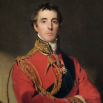Leaderboard
Popular Content
Showing content with the highest reputation on 03/17/2019 in all areas
-
This thread will be used to post lore and battle recaps after each battle. The First Battle of Oberschleisien Studying the 1st Battle of Oberschleisien gives us an insight into the two warring factions, Austria and Prussia. Most notably we can examine their current manner of fighting and the tactics applied by either side. Austria Austria’s battleplan at its core was based upon strength in numbers-both on the offence and defence. With two very large main lines supported by two smaller lines, the Austrian army planned to move as a single unit; command was delegated within a very centralised command. The only deviation from the main group of the Austrian Army were the cavalry and of course, the artillery. We saw initially a defensive attempt by Austria, in which they attempted to dig in and form a wall against potential Prussian attacks. However, a lack of cohesion in some of their units lead to cracks forming which were quickly exploited by Prussian offences. The situation wasn’t helped by a weakness to artillery which was part and parcel of keeping the various lines close together. Cohesion proved to be a problem again once the various regiments began to mix together, and the Austrian Lines struggled to quickly reorganise and react to situations. We saw this when they had an excellent defensive position on a hill, however a lack of cohesion on one of the flanks allowed a Prussian group to reach almost the summit of the hill before the alarm was raised to the rest of the army. However, we also saw their massed command put to excellent use. One of the turning points of the Battle was an offensive lead by faction leader Florian, who massed the army to the left-hand side of the map. A chokepoint in the form of an anchored ship being used to cross the river lead to the bulk of the Austrian spearhead coming face to face with a massive Prussian group. While some seemed ready to pull back and start firing, Florian applied the massed-command plan and ordered all units to push forward through the chokepoint, which the Prussians had not yet fully entered. The Prussian Cavalry-who had been attempting to flank via this river crossing-were caught in the crossfire and took heavy casualties, and the massed Austrian offensive caught the Prussians off guard. The bulk of the Prussian army was slaughtered in the ensuing melee, and with panic setting into their ranks they began to pull back. Another occasion on which a similar tactic was deployed was during a crossing of a bridge, when Florian once again lead the troops forward en masse in an attempt to overwhelm the enemy and secure the area before mopping up the remaining targets. However, it fell short whenever the charge began to dissolve; while the men were ordered to push forward into melee, many of them instead took cover and began to skirmish with the enemy. The dissipating momentum of the charge allowed the Prussians to regroup and push the Austrian offensive back. So far, it seems that Austrian command seems reliant on centralised orders and cohesion within the large bulk of regiments all moving as a single entity. We’ve seen mixed results; in some cases this has given Austria a decisive victory, and in others it has fallen to a final few men managing to fight off a larger side to scrape a victory. Prussia The Prussian Battleplan seems to be one based around manoeuvrability and pressure points. While often splitting the army up throughout the battlefield, Faction Leader Tax Collector prefers to try and isolate Austrian units to take chunks out of the Austrian army at a time, rather than relying on a single successful operation. The Prussian Cavalry does not operate only as a counter-measure to the Austrian Cavalry, but rather in tandem with the Prussian infantry; during a critical melee or charge, the cavalry will swoop in from the flank in order to help overwhelm the Austrians. We saw this during the early stages of the Battle, when the still-strong Austrian army began to pull back from a hilltop in order to prepare for a Prussian advance. When the Prussian army pushed forward, the Austrians were somewhat evenly matched until the cavalry swooped in and sent them into disarray. Flanking seems to be a popular choice for the Prussian Officers; they typically pick weaker parts of lines or defences in order to apply immense pressure and breakthrough. This allows for potentially devastating damage to the Austrian Army, however if they are repelled it can lead to the total destruction of the smaller Prussian lines. The one major weakness suffered by Prussia-from what we saw in the battle-was an inability to regroup once cohesion had been lost. Whether it be the death of too many officers or an offensive losing direction, the Prussian lines often slow to a trickle when trying to attack an enemy position when organisation is low. This twice lead to a smaller Austrian force winning despite Prussian numerical superiority, largely due to the tendency of Prussian soldiers to trickle in slowly rather than regrouping. Regardless, when under the command of their talented officers the Prussian Army is a force to be reckoned with, and Tax’s experience in previous campaigns makes him a formidable enemy. Map Tactics The first few moves of the campaign give us a rough idea of what the plan of both Austria and Prussia entails. It is clear that Prussia intend to be the aggressors, intending to push forward the frontline into Austrian territory. With a three-pronged attack, Tax sent the Prussian armies into Austria, focusing much of the attack on the northeastern border. As Florian moved Austrian armies to counteract this, he seemed more intent on blocking Prussian advances rather than pushing into Prussia. A frontline has developed in Bohemia, with all six armies bordering it. Prussia’s 1st Army was repelled, however it dealt a lot of damage to Austria’s Nordarmee which is now bordered by both the Prussian 1st Army and the Elbe Army. To the south, Austrian’s SudArmee stands ready to either push into Bohemia or use the railroad to flank into Prussian territory. The next battle is for south Bohemia, and it’ll prove decisive. A Prussian Victory will allow them to box the Austrian armies in, leaving most of Prussia’s territory safe and giving them a chance to consolidate their frontline on the road to Wien. However, an Austrian Victory in Southern Bohemia will leave the Prussian armies thinly spread with their western flank exposed and the Austrian Northern frontline secure. - Credits to the campaign writing team and more specifically Scandy1 point
This leaderboard is set to London/GMT+01:00


